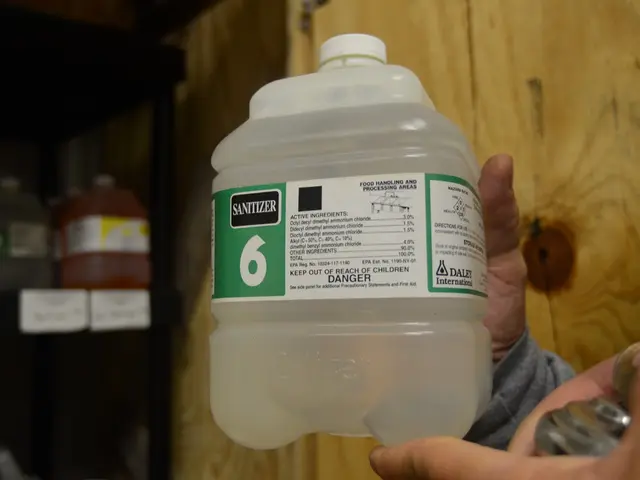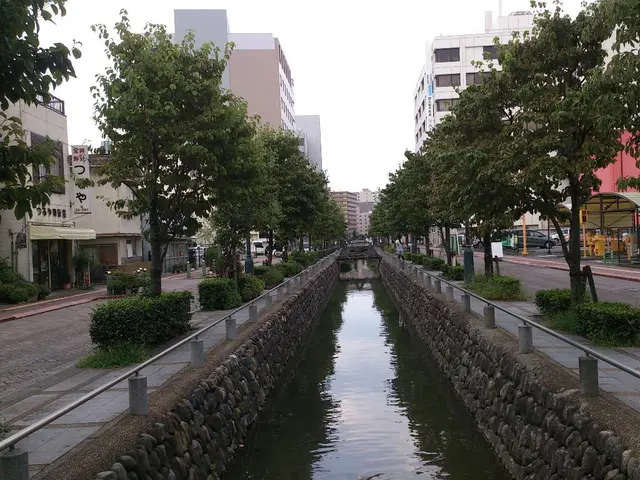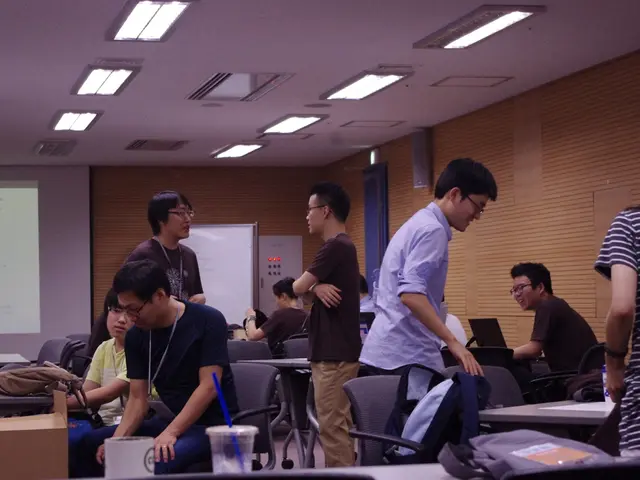Saboteurs Targeting Bridges in North Rhine-Westphalia: Engineers Clamoring for Collective Action
Outdated and Neglected Bridges: A Persistent Problem Annualizing
Bridges, especially those deemed antiquated and forgotten, have long been a pressing issue across the nation. In North Rhine-Westphalia (NRW), over 12,000 bridges fall under municipal jurisdiction, meaning cities bear the brunt of the costs without any federal backing. To facilitate dialogue between municipalities, the "Working Group Municipal Civil Engineering NRW" (K-ING NRW) was formed in 2014, including more than 50 municipalities. Last Tuesday (27th May), this group convened symbolically under a bridge in the Lippe Aue recreational area in Hamm to exchange ideas, network, and share expertise to improve the state of the bridges.
NRW's Bridge Crisis: "It's Too Little, Too Late"
Uwe Greimsehl, the head of maintenance management for the city of Cologne, commends the working group's efforts, remarking that "everyone is in the same boat." According to the graduate engineer, crucial issues include maintenance delays, a depletion of skilled workers, outdated structures, and static issues. The escalating traffic load, which has crippled many bridges in NRW, is the most worrying factor. A prime example is the Rahmedetal bridge on the A45 near Lüdenscheid, which was demolished in 2023 due to its critical state.
Enrichment Insights
Overview: NRW's derelict bridges mirror larger European infrastructure concerns. The following challenges and potential solutions are pertinent to the issue:
Challenges
State of Maintenance- Issue: Delayed maintenance of old bridges due to financial constraints leads to structural decay and increased safety hazards.- Effect: Unpredictable closures, emergency repairs at high costs, and disruptions to traffic.
Skilled Workforce Gap- Issue: A scarcity of qualified engineers and builders trained in historic or aging infrastructure assessment and restoration.- Effect: Reduced capacity to perform timely and quality repairs, heightening the danger of accidents and further deterioration.
Outdated Structures and Static Issues- Issue: Bridges not designed for modern traffic volumes or weights suffer from material fatigue, corrosion, and static inadequacies.- Effect: Structural failure under current conditions, requiring temporary load restrictions or total replacements.
Traffic Load- Issue: Increased traffic in volume and weight amplifies stress on already aged infrastructure.- Effect: Accelerated decay and a higher risk of structural failure.
Solutions
Tackling Maintenance Backlogs- Approaches: Obtain dedicated funding for preventive maintenance and rehabilitation, and prioritize projects according to condition assessments and risk level.- Technologies: Implement sensors and digital twins to monitor bridge health in real-time, enabling predictive maintenance.
Skilled Labor Shortage- Solutions: Invest in the training of engineers and craftsmen proficient in historic and aged infrastructure, and form collaborations with universities and vocational schools.- Opportunities: Recruit skilled labor from other regions or countries, and support apprenticeship programs.
Upgrading Outdated Structures- Decisions: Evaluate whether upgrading existing structures or replacing them entirely offers the most cost-effective approach.- Innovations: Utilize advanced materials (e.g., fiber-reinforced polymers) and construction methods to prolong bridge life.
Managing Traffic Load- Strategies: Implement weight and lane restrictions on vulnerable bridges.- Improvements: Plan infrastructure updates to accommodate current and future traffic demands.
Additional Context and Inspiration
Although not specific to NRW, European projects like Greenways4ALL illustrate the repurposing of disused infrastructure (such as old railway bridges) for recreational or tourist purposes. Such conversions alleviate the maintenance burden on the primary transportation network while offering new prospects for community involvement. This approach might not fully resolve the problems of road bridges under heavy traffic, but it provides alternatives for less demanding structures [2].
Summary Table: Challenges and Solutions
| Challenge | Effect | Potential Solutions ||--------------------------|-----------------------|----------------------------|| State of Maintenance | Structural risks, closures| Preventive funding, digital monitoring || Skilled Workforce Gap | Delayed, poor-quality work | Training, recruitment, apprenticeships || Outdated Structures | Static failures, accidents | Rehabilitation, innovative materials || Traffic Load | Accelerated deterioration | Traffic management, adaptive infrastructure |
Health-and-wellness initiatives could provide innovative solutions to NRW's bridge crisis, such as promoting preventive maintenance programs among the municipal workforce to reduce the impact of maintenance delays and static issues on the bridges. For instance, introducing stress management workshops, ergonomic equipment, or health checks to ensure that workers are in optimal condition to perform their tasks effectively could lead to timelier and quality bridge repairs.
Science also plays a crucial role, as the advancements in the field of civil engineering can be leveraged to upgrade outdated structures in NRW. Researchers could develop new materials and construction methods to prolong the lifespan of bridges, making them more resilient against accelerated deterioration caused by increased traffic load and material fatigue. Additionally, scientific collaboration between universities, research institutions, and the working group could lead to innovative bridge designs that accommodate modern traffic volumes and weights, thus mitigating the risk of structural failure.








